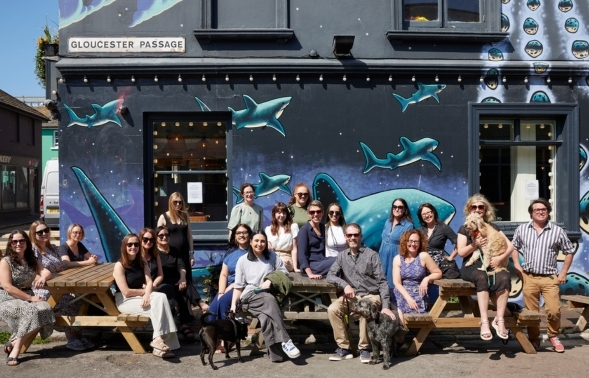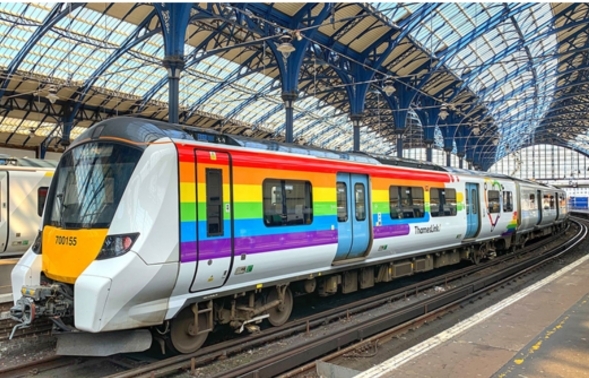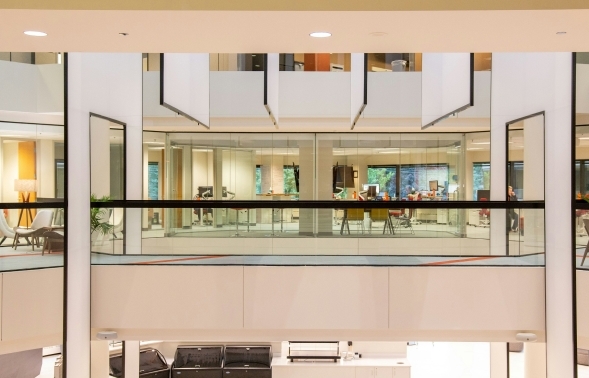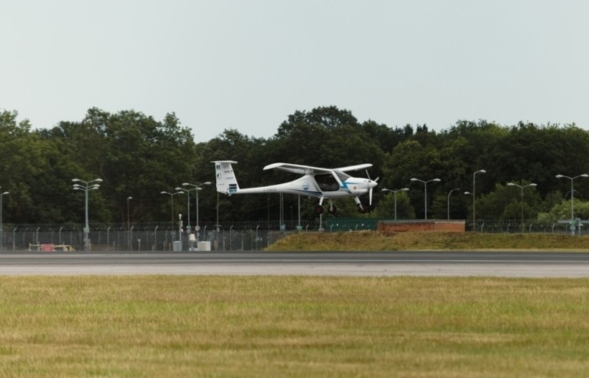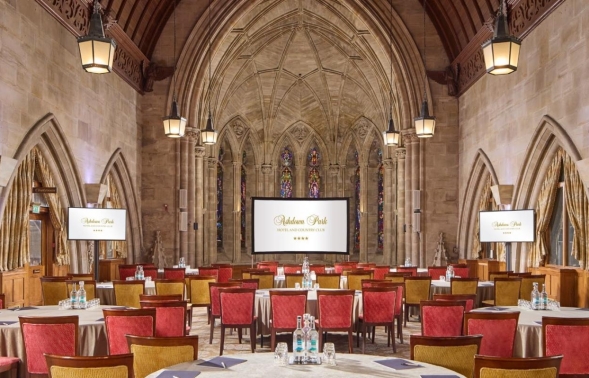- Britain's tiniest train station has opened at Blackfriars - and it's especially for bugs!
- Part of a living art installation by rail operator GTR to celebrate spring and biodiversity
- GTR is encouraging customers and local communities to support wildlife in their gardens and local areas
A train station especially for bugs has arrived at London Blackfriars today as part of a new living art installation unveiled by Govia Thameslink Railway (GTR) - the train operator for Southern, Great Northern, Thameslink and Gatwick Express.
The floral installation by multi-media artist Alice McCabe acts as a gateway to spring, framing the impressive station view of London. Featuring seasonal plants and flowers - as well as a home for bugs - the installation aims to support more biodiversity and mirrors eco-friendly projects that are being carried out at station gardens across the GTR network.
As part of its station improvement programme, the rail operator has completed more than 100 landscaping and rewilding projects in recent years, including introducing bee and bug hotels to outdoor spaces. Working with the London Wildlife Trust Consultancy to carry out ecological surveys at specific sites this year, GTR will now be monitoring, improving and enhancing biodiversity and encouraging customers and local community groups to do the same.
Situated at Blackfriars - GTR's most sustainable station - the floral installation is more than just a pretty picture. Colourful bulbs and blossom bring the energy of spring, mixed with dried elements and shade-loving plants that draw attention to often overlooked and disregarded spaces. Commonly thought of as 'nuisance' species, plants such as nettles, brambles and dandelions have purposely been made a key feature in the design, highlighting their importance to biodiversity. A single nettle patch can support over 40 species of insects, whilst dandelions can supply food to a number of pollinators including bees, butterflies and hover flies.
Jason Brooker, Head of Environment at Govia Thameslink Railway, said: "This living art installation is a visual reminder about the little things we can all do to help the planet. Rather than cutting back wildflowers and nettles, we should consider the wildlife that these plants help to support, such as bumblebees, caterpillars, butterflies and moths. This is something we're actively changing at GTR to ensure the maintenance of our stations is balanced with supporting wildlife.
"Over the coming year, we'll be looking to increase biodiversity at specific sites and we'll be sharing guidance and expertise with our station partners and communities so the work can be mirrored across our entire network. We hope the new Bug Station at Blackfriars will encourage people to get creative in their own gardens and outside spaces!"
David Mooney, Head of the London Wildlife Trust Consultancy, said: "There are lots of simple things people can do at home to encourage and support wildlife, such as building log piles to attract bugs and beetles, installing bird and bat boxes, or growing a patch of wildflowers. We're delighted that Govia Thameslink Railway is passionate about biodiversity and encouraging their passengers to get involved."
To help customers get planting, the rail operator is also handing out free seed packets at selected stations. Containing wildflowers such as Meadow Buttercup, Sorrel and Red Campion, the biodegradable packets will be available at Blackfriars, Crofton Park, Welwyn Garden City, Salfords and Gipsy Hill train stations from Thursday 6 April. Simply ask a member of staff for more information.
As well as planting seeds, the Blackfriars Bug Station can be recreated at home with these simple steps from The Wildlife Trusts:
- Go foraging. You'll need to collect wooden pallets, bricks, old plastic bottles, straw, twigs, stones, cardboard, leaves, bamboo canes and old tiles.
- Don't buy new. There's no need to buy anything new for your Bug Station, just use what you have in the house and can find outside. If you're struggling to find old bricks and tiles, ask a friendly builder if they have any spare suitable building materials.
- Build your structure. Place a wooden pallet in your chosen location, and then line bricks around the corners and across the middle. Put another wooden pallet on top of the bricks and repeat the process to use up all your pallets
- Fill the station with anything! With your old plastic bottles, cut off the top two thirds and fill some up with bamboo canes or plastic straws, and the others with rolled up cardboard. These can then be placed in between your bricks in structure. Fill the remaining gaps with anything else you've foraged such as other bricks, leaves, pebbles, loose bark, straw, stones and tiles.
- Get creative. We've made ours look like a train station using old logs for the train and sticks for a train track, but you can make yours into whatever you want. Whether that's The Bug Armsor The Travel Inn-sects, you can choose to make your design look like any building by being creative.
- Stop weeding! If you can't create a bug hotel but do have a small garden, why not leave a small patch of weeds so that bugs can stay there.
The living art installation will be on display at Blackfriars for a limited time only. In-keeping with the sustainability theme, all of the materials featured in the display will be donated and rehomed to GTR station gardens.




